Year 3
35-36
Months
3rd Year – Months 35-36
Planning a Birthday Party?
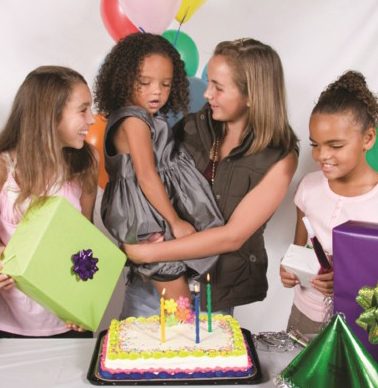
Your child is old enough to enjoy having friends over for a celebration, but how fancy should a 3-year-old’s party be? The basic rule for a young child’s birthday party is: Keep it simple. Think about inviting the same number of children as your child’s age.
Children at this age can easily become overexcited at their own parties. Too much activity can turn a fun event into a disaster. Sometimes parents try to combine a toddler’s party with an adult party. Remember that gives you twice the work to prepare and cleanup. It’s also hard to carefully watch toddlers when you are talking to other adults.
Tips for a Successful Party
- Keep food and party games simple. Plan games in which everyone wins or at least gets some kind of prize.
- Three-year-olds aren’t very skilled at entertaining themselves, so plan 1½ to 2 hours of structured activity. Alternate quiet activities (such as a story time) with active games (like a balloon chase or beanbag toss).
- Plan a quiet activity (like drawing or a guessing game) just before serving the cake and ice cream. This way, the children aren’t overexcited when they eat.
- Children don’t always understand that presents are meant for the birthday child, so it’s a good idea to have a small party favor wrapped for each child to open.
- Be prepared for the possibility that your child will be overwhelmed by the whole thing. Try to keep your sense of humor if your child bursts into tears or hides in the closet.
What’s It like to Be 35-36 Months Old?

How I Talk
- I am speaking more clearly.
- You can understand at least ½ of what I say.
- I can have short conversations.
How I Grow
- I can run easily.
- I can jump forward.
- All my baby teeth are in.
- I can pour cereal in a bowl.
- I can use child sized utensils.
- I can dress myself.
How I Understand
- I am curious about other people’s emotions.
- I know as many as 4 colors.
Some children do things earlier or later than described here. Most differences are normal. Focus on what your child can do and get excited about each new skill. If you notice that your child is lagging behind in one or more areas for several months, use this list to talk with your doctor about your child’s development.
Feed Your Child a Healthy Diet
 Use https://www.myplate.gov/life-stages/toddlers to plan a balanced diet each day for your child.
Use https://www.myplate.gov/life-stages/toddlers to plan a balanced diet each day for your child.
Offer:
Fruit Group (1 cup)
Examples of 1 cup are:
1 large orange
1 cup 100% grape juice
1 small apple
½ cup raisins
2 halves of canned peaches
Vegetable Group (1 cup)
Examples of 1 cup are:
1 large sweet potato
1 cup cooked green beans
1 cup chopped, raw, or cooked carrots
2 cups raw lettuce and tomato salad
Protein Group (2 ounces)
Examples of 1 ounce are:
1 egg
1 ounce of cooked lean beef, chicken, turkey, pork, or ham
¼ cup cooked beans
1 sandwich slice of turkey
1 tablespoon peanut butter

Grain Group (1.5 ounces)
These are made from whole grain or enriched flour or enriched meal.
Examples of 1 ounce are:
½ cup cooked oatmeal
1 slice whole wheat bread
1 small piece cornbread (2¼” by 1¼” by 1¼”)
1 cup whole wheat cereal flakes
1 cup cornflakes
1 small corn or flour tortilla (6” diameter)
½ cup cooked brown rice
Dairy Group (2 cups)
Consume foods that are lowfat or fat-free.
Examples of 1 cup are:
1 ½ ounces hard cheese (cheddar, mozzarella, Swiss, Parmesan)
1 cup milk (low-fat or fat-free)
1 regular (8 ounce) container yogurt
½ cup ricotta cheese
Some days your child will choose to eat more or less than suggested. That’s normal.
Playing Games Teaches Your Child New Skills
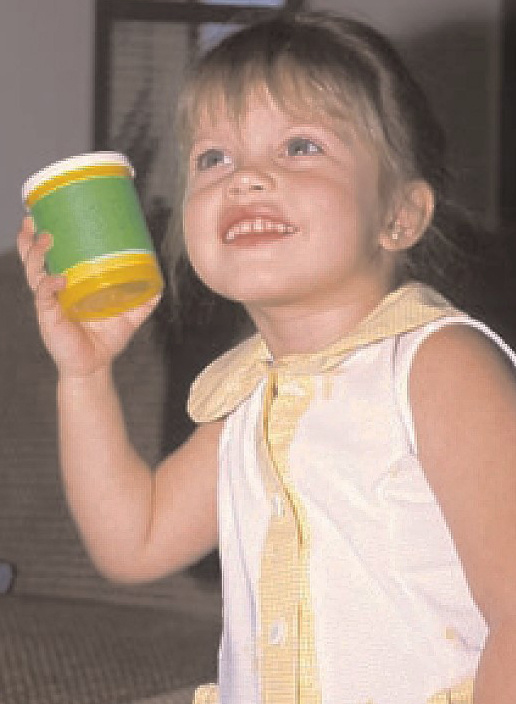
Matching sounds teaches about different sounds.
You need:
- 6 plastic containers (like margarine tubs or food storage plastic containers)
- Fillings to make the containers rattle —such as rice, beans, coffee grounds, small pebbles
Getting ready:
- Partly fill two containers with something hard that rattles (like beans). Do not put anything in the containers that will hurt your toddler. Be sure to put the same number of beans in each container so that the containers sound alike when you shake them.
- Then partly fill two more containers with grains of rice. Check to see that they sound the same.
- Partly fill the last two containers with coffee grounds or some other filler. Coffee grounds will make a soft, swishy sound.
- When you shake the three kinds of containers you will discover that each pair sounds different.
- Tape the tops of the containers closed with heavy duty tape to keep your toddler from swallowing the fillings.
Playing:
- Sit down with your toddler and give them three of the containers—one with each kind of filling. Keep the other three for yourself.
- Take turns rattling one of the containers and having your toddler find the matching sound in their own set.
Another way to play this game is to put all six containers between you.
- Pick them up one at a time and shake them. Encourage your toddler to do the same.
- Together, pick up and shake, pick up and shake until you have a sound match for each. Point out that these are the “same” sounds.
- Point out when the sounds are “different.”
- Your child may want to see what is inside the containers making the noise. You can show them, but then be sure the container is tightly taped again. Put them out of reach when you’re not supervising play with them
Ask silly questions to encourage your child’s imagination.
- Ask your child to imagine what would happen if something silly occurred —such as what would happen if I put on my glasses upside down, or candy bars grew on trees, or people walked on their hands instead of their feet?
- Let your child make up some silly questions for you, too. Have fun guessing and acting out these silly questions. You might be pleased and surprised with your child’s imagination.
Have fun with the guessing game.
- Sit in a familiar room with your child, look around and pick out something you can describe in two ways: what it looks like and what it does.
- After giving these two descriptions, ask your child to guess what you are thinking of. For example, I can see something that is red and rolls along the floor —or I can see something that is white and you drink from it —or I see something that has 4 legs and you sit on it.
- Remember to let your child have a turn asking you to guess, too.
Family Meals Build Strong Bonds
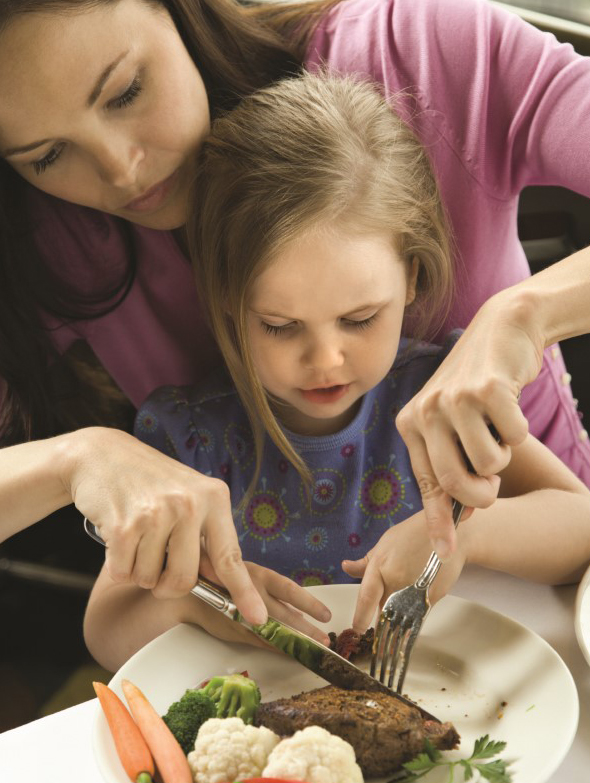 Family meals help to build strong family bonds. You may think you don’t have time for family meals, but it’s worth the effort. Children who see their parents eating healthy foods also eat healthy foods themselves. Toddlers who eat at least one meal a day with their family do better in school.
Family meals help to build strong family bonds. You may think you don’t have time for family meals, but it’s worth the effort. Children who see their parents eating healthy foods also eat healthy foods themselves. Toddlers who eat at least one meal a day with their family do better in school.
Try to have at least one adult sit and eat at the same time as your child every day. Find one time during the week when everyone can sit together. It may be a breakfast or a lunch time. Keep it simple, keep it fun… just keep it!
- Make family meals a priority in your house.
- Plan ahead — look at family schedules. Find a time that works for everyone.
- Let everyone know that the family will sit and eat together.
- Avoid talking about problems.
- Keep meals simple. Buy foods that are easy to prepare.
- Have pleasant family conversations. Talk about fun things.
- Ask your child about their day. Talk about future plans you have together.
Let children serve themselves.
Three-year-olds can serve themselves most food without help. Letting your child serve themself helps them practice their coordination skills. It may also help them avoid eating too much. Toddlers usually serve themselves the amount of food that is just right for them.
Adults tend to put too much food on toddlers’ plates. Toddlers should also be the ones to decide if they want more to eat. Taking seconds of one food without finishing another is okay. Forcing a toddler to eat all the food on their plate can teach them to eat too much.
By Helping, Your Child Is Learning to Be Capable
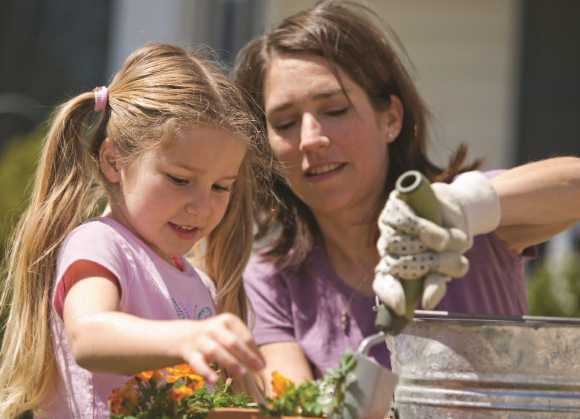
Your child is growing more independent and capable every day. They can sort and put away forks and spoons. They can carry piles of clean clothes to the bedroom. They can set the table with silverware.
It takes time and energy for you to show them how to do a new job, but it’s worth the effort. Children often say, “Me do it” as they strongly promote their right to become their own person. “Let’s do it together” or “I will help too” usually works better than “You can’t do that” or “No, I’ll do it,” or “You’re too little.”
Encourage your child. It will build their confidence and help them grow into a helpful, responsible person.
If You Notice Changes in Your Child’s Hearing Get It Checked Right Away
A Hearing Test Is an Important Part of Your Child’s Regular Medical Checkup
- When a child is under 3 years of age, hearing is tested by observing your child’s response to sound and their ability to learn new words. Good hearing is part of speech development.
- When children turn three, they can usually learn how to take hearing screening tests.
- If your child has a hearing test, be patient. They may not understand what to do in order to cooperate fully.
- If your child has not had a hearing test, ask a health professional how to get one.
Infants and toddlers frequently have colds that can lead to ear infections. If ear infections are not detected and treated, the toddler may have hearing problems.
- Catching hearing problems early is the key to successful treatment and the prevention of hearing loss. A hearing problem can interfere with the development of normal language and learning.
- Parents can protect their child’s hearing by making sure that infections are treated and hearing is regularly tested by their doctors.
Positive Guidance Produces Cooperative and Well-Behaved Children
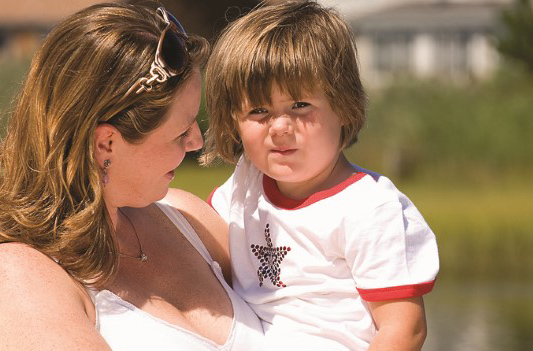
- Have a few simple rules, explain them to your child, and stick to them
- Keep calm when disciplining your child.
- Praise your child’s good behavior.
- Tell your child what to do, rather than what not to do.
- Give your child reasonable, limited choices.
- Prepare your child for new situations.
- Save your “no’s” for times when your child is in personal danger or is in danger of hurting other people or damaging property.
- Head off problems before they happen. Make it easy for your child to do the right thing.
- Discipline is teaching. It’s one of the ways you show you love your child.
Some Playground Equipment Is Not Safe
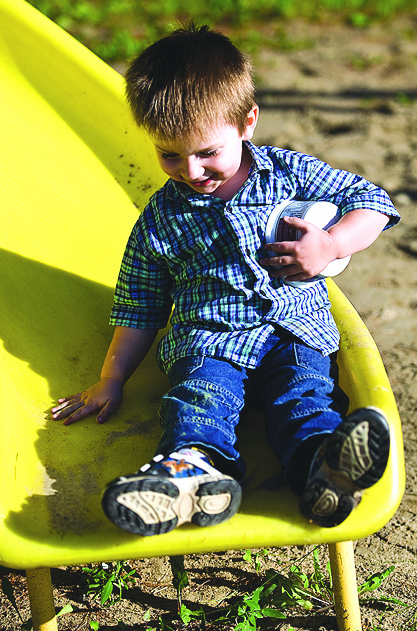
Your toddler is doing more running, climbing and jumping. They are more independent and used to doing things on their own. They may also try doing things that may not be safe. They like to try out their new skills and show how “I can do it myself.”
The playground is a great place for your toddler to try out their new skills and get the activity they need to be healthy. But playgrounds are built for a range of ages. Some things may not be safe for toddlers. Even if the playground is at a school or church, there may be hidden hazards. Point out hazards to your toddler, such as:
- Sharp metal corners or splintered wood
- Bars that your toddler can get their head trapped between
- Large, sharp rocks and tree roots that they can trip over
- Cables that they may trip over
- Hard surfaces
Let them know where they should be careful. Then let them explore. Remind them if you see that they are not playing safely. Always watch your toddler carefully. Know where they are and what they are doing.
Expect Interest in Private Parts
Toddlers begin to understand gender when they are around 3 years old. They notice the differences between boys and girls. It is common for them to show each other their genitals or to ask their friends to show theirs.
This is the same curiosity your child has for other things they are learning about. Try not to react with shock if you catch your toddler showing their genitals or looking at a friend’s. Reacting harshly can cause your toddler to feel shameful. Instead, calmly tell your toddler that their genitals are private. Help them and their friend move on to a different activity.
Tips for teaching your child about sex:
- Talk with them about their curiosity.
- Explain that boys have penises and girls have vaginas. Use the same tone of voice as you would when explaining other differences in their world —like some people have red hair, some have black hair.
- Get books for toddlers that help teach about these differences.
- If your toddler seems more curious about genitals than other things, tell your toddler’s doctor. Sometimes this can be a sign of abuse.
Listening to Your Child Helps Them Learn to Listen
Sometimes young children feel that instead of listening to them, their parents mostly interrupt, instruct, advise, or criticize. They are often right! This can lead to misunderstanding, stress, and anger. Children whose parents don’t listen to them can feel that they and their ideas are not very important.
Check yourself: Do you talk back before you listen? If so, try active listening. Active listening is hearing and understanding the other person without interrupting, jumping to conclusions, judging, preaching, or getting mad. It means showing respect for the other person and their ideas, even if you don’t agree with them. It means waiting until others have finished before saying anything. This works with adults, too!
- Focus on your child’s interests and encourage them to talk with you —even if you can only spare a few minutes. In talking with your child, you show you care about their thoughts, experiences, and needs, and that you want to learn more about them.
It takes patience and practice to develop good listening skills, but try it. You may find your conversations with your child easier and less stressful. As an extra reward, your child may imitate your good example and start listening more to what you have to say.
Threats and Depriving Children Are Abusive
In this newsletter we have described the best ways to guide children. None of these use physical punishment. Physical punishment does not help children learn to behave.
Physical punishment —such as pinching, hitting, spanking, or shaking —can seriously hurt a child. If your child is bruised or injured by physical punishment, this is considered abuse. Depriving a child of food or care, or keeping a child tied up or locked in a room is, of course, abuse. You can also abuse a child with words. Threats of physical or other feared punishment are abuse.
It is abusive to threaten that scary things—that the bogeyman will take them, that loved ones will stop loving them or leave them or die —will happen to the child if they don’t behave.
It is abusive to make a child believe they are unloved, stupid, wicked, or hopeless. Our suggestions on discipline are written to help parents teach without abuse. Make sure that your babysitters and child care providers are using effective discipline —and not abusive punishment.
Stress management helps parents control their tensions so that they do not take out their anger and frustration on their children. Children who are abused or unfairly or harmfully punished are more likely to become uncooperative and difficult than children who learn the rules and are disciplined gently and patiently.
Help Your Child Resist Negative Peer Pressure
Your toddler is off to a good start. You have helped them learn about themself and their surroundings, and you have taught them to trust, respect, and enjoy others.
This foundation has prepared them to become the kind of person you want them to become. The good relationship you have will help you continue to support and guide them, as they face future decisions about school, friends, drugs, sex, and other important issues.
- Helping your child think for themself now will help them resist the negative pressures of other teens later on.
- Keeping the lines of communication open now will help them feel they can talk with you about difficult and confusing questions in the years to come.
- Encouraging your child’s enjoyment of language and learning will help them succeed in school.
Parenthood is a rich, exciting opportunity for you to grow with your child. You can offer your child the support, values, and skills to handle whatever comes along in the future.